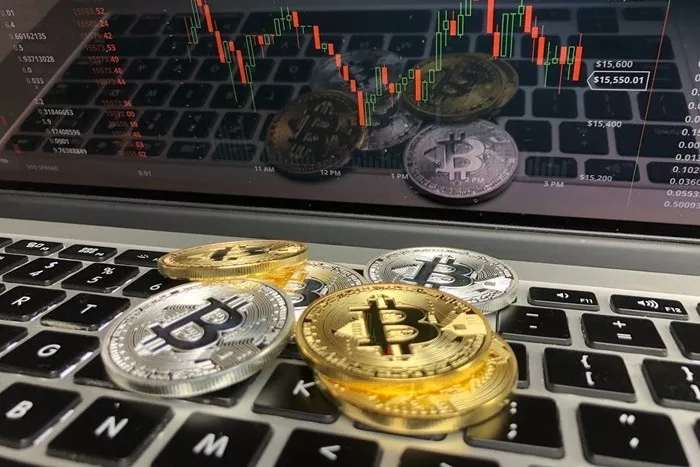Cryptocurrencies have revolutionized the financial landscape with their decentralized nature and the promise of significant returns. However, they are also known for their extreme volatility. This volatility can lead to substantial gains but also significant losses. Understanding which cryptocurrencies are the most volatile can help investors navigate this risky yet potentially rewarding market.
1. Bitcoin (BTC)
Overview
Bitcoin is the first and most well-known cryptocurrency. It was created in 2009 by an anonymous person or group known as Satoshi Nakamoto. Bitcoin operates on a decentralized network using blockchain technology, which ensures transparency and security.
Volatility Factors
Bitcoin’s volatility is influenced by several factors:
Market Sentiment: News about regulations, technological advancements, or macroeconomic trends can lead to significant price swings.
Liquidity: As the most traded cryptocurrency, Bitcoin’s liquidity can sometimes mitigate but also exacerbate price volatility.
Adoption Rates: Increased adoption by institutions and individuals can lead to sudden price increases.
Historical Volatility
Bitcoin’s price has seen massive fluctuations since its inception. In 2017, it reached nearly $20,000 before crashing to around $3,000 in 2018. More recently, Bitcoin experienced a meteoric rise to over $60,000 in early 2021, followed by a sharp correction.
See Also: 7 Most Decentralized Cryptocurrencies
2. Ethereum (ETH)
Overview
Ethereum, introduced by Vitalik Buterin in 2015, is a decentralized platform that enables smart contracts and decentralized applications (dApps). Ether (ETH) is the native cryptocurrency of the Ethereum network.
Volatility Factors
Ethereum’s volatility is driven by:
Technological Upgrades: Updates like the transition to Ethereum 2.0 can cause significant price movements.
dApp Ecosystem: The success and adoption of dApps on the Ethereum platform can lead to increased demand for ETH.
Regulatory News: As with all cryptocurrencies, regulatory developments can impact Ethereum’s price.
Historical Volatility
Ethereum has experienced substantial volatility. In 2017, its price soared from around $10 to over $1,300. However, it also suffered significant drops, such as falling below $100 in 2018. In 2021, Ethereum reached new highs, peaking at over $4,000, before experiencing corrections.
3. Ripple (XRP)
Overview
Ripple (XRP) is a digital payment protocol that aims to facilitate fast, low-cost international transactions. It was created by Ripple Labs Inc. in 2012.
Volatility Factors
Ripple’s volatility is influenced by:
Legal Issues: Ongoing legal battles with the SEC have significantly impacted XRP’s price.
Adoption by Financial Institutions: Partnerships and adoption by banks and financial institutions can lead to price increases.
Market Sentiment: News and market sentiment can cause rapid price changes.
Historical Volatility
XRP has shown considerable volatility over the years. It experienced a massive surge in late 2017, reaching an all-time high of around $3.84. However, it has also faced significant downturns, especially due to legal uncertainties.
4. Litecoin (LTC)
Overview
Litecoin, created by Charlie Lee in 2011, is often considered the silver to Bitcoin’s gold. It is designed to provide faster transaction times and lower fees compared to Bitcoin.
Volatility Factors
Litecoin’s volatility is driven by:
Market Trends: Litecoin often follows the overall market trends set by Bitcoin.
Technological Developments: Updates and improvements to the Litecoin network can impact its price.
Adoption and Usage: Increased adoption for transactions can lead to price increases.
Historical Volatility
Litecoin has experienced significant price swings. It reached an all-time high of around $375 in 2017 before falling to under $30 in 2018. It has seen multiple peaks and troughs since then, reflecting its volatile nature.
5. Cardano (ADA)
Overview
Cardano is a blockchain platform founded by Charles Hoskinson, a co-founder of Ethereum, in 2017. It aims to provide a more balanced and sustainable ecosystem for cryptocurrencies.
Volatility Factors
Cardano’s volatility is influenced by:
Technological Progress: Developments and upgrades on the Cardano network, such as the Alonzo hard fork, can impact its price.
Adoption of dApps: The success and adoption of decentralized applications on Cardano can lead to price increases.
Market Sentiment: News and overall market sentiment can cause price fluctuations.
Historical Volatility
Cardano has shown considerable volatility since its inception. It experienced significant price increases in early 2021, reaching an all-time high of over $3. However, it also saw corrections, reflecting its volatile nature.
6. Dogecoin (DOGE)
Overview
Dogecoin, created as a joke in 2013 by Billy Markus and Jackson Palmer, has gained popularity due to its meme culture and endorsements from celebrities like Elon Musk.
Volatility Factors
Dogecoin’s volatility is driven by:
Social Media Influence: Tweets and endorsements from celebrities can lead to rapid price increases.
Market Sentiment: General market trends and news can impact Dogecoin’s price.
Speculation: High levels of speculation contribute to Dogecoin’s volatility.
Historical Volatility
Dogecoin has experienced extreme volatility. It saw a massive surge in early 2021, reaching an all-time high of around $0.74, largely driven by social media hype. However, it also experienced significant drops, showcasing its volatile nature.
7. Binance Coin (BNB)
Overview
Binance Coin (BNB) is the native cryptocurrency of the Binance exchange, one of the largest cryptocurrency exchanges in the world. It was launched in 2017 by Binance CEO Changpeng Zhao.
Volatility Factors
Binance Coin’s volatility is influenced by:
Exchange Performance: The performance and growth of the Binance exchange can impact BNB’s price.
Usage in Binance Ecosystem: Increased usage of BNB for transaction fees and other services on Binance can lead to price increases.
Market Trends: Overall market trends and news can affect BNB’s price.
Historical Volatility
Binance Coin has experienced significant price swings. It saw substantial growth in early 2021, reaching an all-time high of around $690. However, it also experienced corrections, reflecting its volatile nature.
Conclusion
Cryptocurrencies are inherently volatile, and understanding the factors driving this volatility can help investors make informed decisions. Bitcoin, Ethereum, Ripple, Litecoin, Cardano, Dogecoin, and Binance Coin are among the most volatile cryptocurrencies, each influenced by unique factors. While this volatility can lead to substantial gains, it also carries significant risks, making it crucial for investors to stay informed and exercise caution in this dynamic market.
Related topics:


























